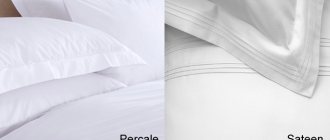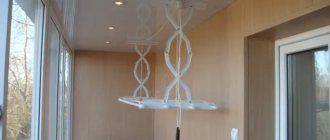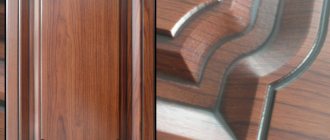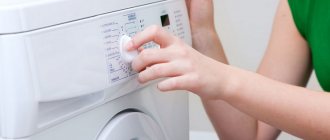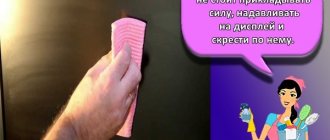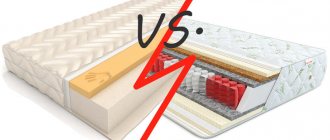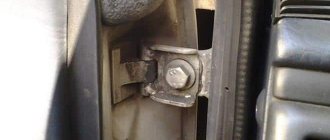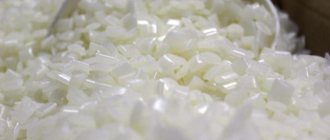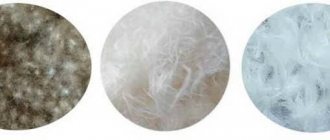Description of fabrics
Each fabric - both poplin and percale - has its own history, dating back several centuries. The only thing I would like to note is that production processes have been improved and modernized over time, due to which the material has acquired new properties.
Percale is a fabric originally from India.
Percale is a cotton fabric made from fibers that are not twisted, but combed in a special way. During the production process, all threads are subjected to sizing, that is, they are treated with a special adhesive composition, as a result of which they fit more tightly to each other. This adds strength to the material, but at the same time makes it very smooth since the threads do not frizz. And don’t be alarmed, the adhesive composition is chemically neutral and completely hypoallergenic. In fact, it is impossible to even suspect that the material contains a binder. The fabric is very thin and soft with a velvety matte surface.
The history of the material is quite long. The fabric comes from India. Initially, the material was obtained by weaving cotton threads of medium thickness. Later, the canvas began to be exported from India to Europe. In the 18th century, namely in 1774, the French Minister of the Navy Turgot noted its high strength, and after treatment with linseed oil, he ordered it to be used for sewing sails. To this day, percale is one of the best materials for making sails, parachutes, and covers. However, this fabric is also used in everyday life. Women's and children's clothing is made from printed and plain-dyed material, and bedding sets made from percale are considered elite.
Poplin - “papal” material of French origin
Poplin is a fabric made from natural cotton, less often it is made with the addition of silk and wool fibers. But such bedding sets belong to the premium class and are very expensive. That is why cotton poplin is the most popular. A distinctive feature of the fabric is its fine rib, which is obtained by interweaving thin warp threads with thick weft fibers.
According to the history of its origin, poplin is in no way inferior to percale. The fabric has been known since the 14th century. They began to produce it in Avignon (France), where at that time there was the residence of the Pope. It was used to make clothes for the Pope and his retinue. Therefore, translated from Italian, “papalino” means “papal.” The fabric was brought to Russia in the 18th century. Dresses from it were in the wardrobe of all fashionistas.
Comparison of properties
A comparison of the main characteristics is given in the table:
| Characteristic | Percale | Poplin |
| Fabric density, g/m² | 120 | 100-120 |
| Number of threads | 85-120 | 65-80 |
| Washing temperature | up to +60˚ C | up to +60˚ C |
| Ironing temperature | up to +150˚ C | up to +110˚ C |
Both materials are high density fabrics. Even higher, from 130 to 280 threads, is calico, luxury satin or jacquards, the latter are a bit harsh. Medium-high density fabrics have 65-80 threads (chintz), medium - 50-65 threads, low - 20-30 threads.
For your information. Medium and low density fabrics are not used for sewing bed linen.
For smoothness and softness
Percale is not much different from poplin if we take such a parameter as smoothness. The difference is more noticeable between both of them and calico. They are both smoother. However, a discerning observer will notice nuances. Poplin is a little softer, it has more heat capacity, and is often used for sewing underwear: men's shirts, blouses. The second material gives a slightly different feeling: it is tight, cool. Its threads fit very tightly to each other.
Interesting. The widely used calico is slightly stiffer than percale. Percale is softer, but at the same time thinner and denser.
Which is denser and stronger?
The density of percale is achieved by impregnation, poplin - by weaving. The first material is more durable and dense. It was originally invented in France for the needs of marine equipment. The sails, made of cotton fabric impregnated with linen, and later impregnated with organic resins, were strong enough to withstand gusts of wind, and light enough not to weigh down the vessel's equipment. Then the material began to be used to cover aircraft elements. In the 1960s and 70s, it was replaced by cheaper synthetics.
Fact. Fabric density on labels can be indicated in international units - TC (Thread counts). For percale the indicator is 200 TC, for poplin - 120-130 TC.
Degree of creasing and difficulty in care
Both materials hardly wrinkle, do not need ironing, and do not stretch. They are resistant to stretching, can withstand frequent washing without losing their appearance, and are environmentally friendly. They can be washed successfully in cool water, they repel dirt. Ironing can be replaced by proper handling after washing: items are hung neatly, evenly, and when dried, they are stacked in the closet. Shrinkage for cotton is minimal - up to 2-3%.
Wear resistance level
Percale is more durable. This is one of the reasons why original and non-standard bed linen is often made from it, dyed in exclusive, rare colors: red, chocolate, dark purple. But the gap between these two materials is small. High-quality poplin can also survive 1000 washes.
Author:
Zakharova Nina Afanasyevna
I hope you like my article! If you find any shortcomings, just write to me about it! I am always ready for a conversation and will answer any questions you have, ask them!
